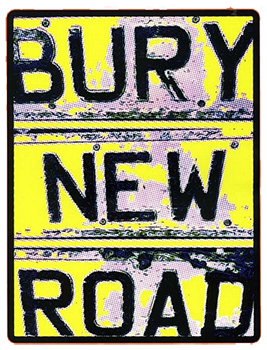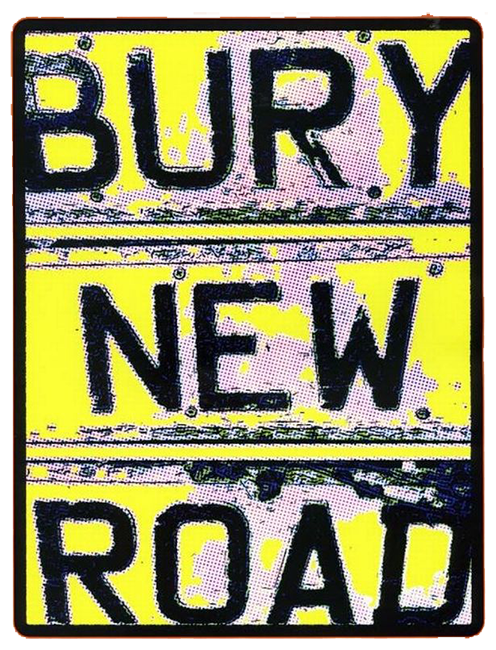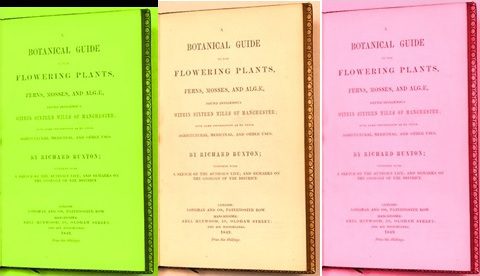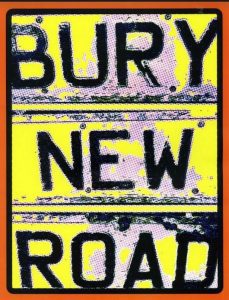In 1849, Richard Buxton published his classic book A botanical guide to the flowering plants, ferns, mosses and algæ, found indigenous within sixteen miles of Manchester. Here are some extracts relating to Kersal Moor, including a list of all the plants he catalogued from there…
“In the year 1821, I for the most part discontinued making my botanical rambles. This arose from my going to work with a new master, and from my time being very fully occupied, owing to the briskness of trade. But in the spring of 1826, I began again to make frequent excursions. One day in the month of June, in this year, I went to Kersal Moor, and was quietly engaged in botanising on the back part of it, near the brook, at a place now drained and cultivated, where grew a number of my favourite plants…
Whilst looking amongst my old acquaintances, I happened to see a person engaged in the same pursuits as myself. I made up to him, and asked him if he were botanising. He replied, ‘Yes, I am doing a little in that way’. I said that I had paid some attention to the subject myself, it was a study which had afforded me a good deal of pleasure. We walked about together on the moor, talking on botany, and observing the different plants as we went along. He asked me where I lived; I told him, in Manchester, but I was a native of that neighbourhood, having been born at Sedgley. I found him just such a man as I had long wished to meet with, not a mere country herbalist, but an excellent scientific botanist. This was no other person than John Horsefield, hand-loom weaver, of Whitefield, the president of the Prestwich Botanical Society; and now the president of the General Botanical Meetings, held at different places in the county, lying between Clayton, Middleton, Newton Heath, Radcliffe, Eccles, and Manchester; a profound botanist…
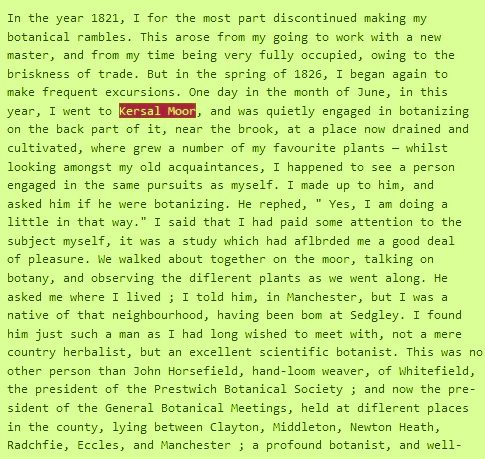 But to resume. I accompanied Horsefield to Hope-square, Sedgley, to see an old botanist, James Percival, who was not then at home, but we went into his garden and looked at his plants. After leaving this place, we parted, and went to our respective homes; however, before we separated, it was agreed between us that we should meet again. Accordingly, in about a week afterwards, I went to Horsefield’s house, and made a short excursion into his district with him. He then proposed an excursion to Baguley Moor, and some other parts of Cheshire, which I was well acquainted with; and we arranged to meet at the bottom of Hunt’s-bank, Manchester, at seven o’clock in the morning of that day week.
But to resume. I accompanied Horsefield to Hope-square, Sedgley, to see an old botanist, James Percival, who was not then at home, but we went into his garden and looked at his plants. After leaving this place, we parted, and went to our respective homes; however, before we separated, it was agreed between us that we should meet again. Accordingly, in about a week afterwards, I went to Horsefield’s house, and made a short excursion into his district with him. He then proposed an excursion to Baguley Moor, and some other parts of Cheshire, which I was well acquainted with; and we arranged to meet at the bottom of Hunt’s-bank, Manchester, at seven o’clock in the morning of that day week.
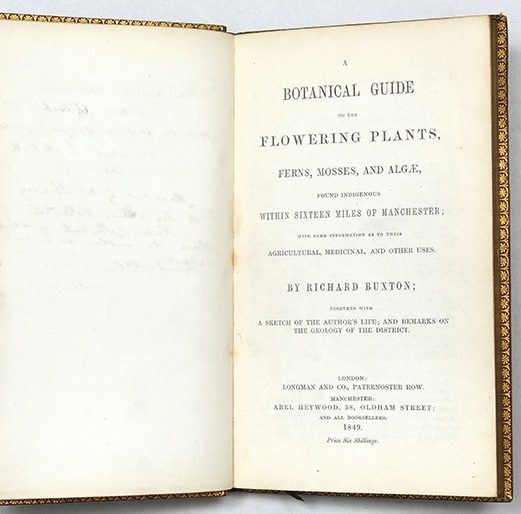 I may as well here mention the reason for James Percival making this journey. Horsefield had mentioned to him the interview with me on Kersal Moor; and how he had found out a botanist, unknown to the rest of the Lancashire working-men of science, of the name of Buxton, who was born at Sedgley, and whose father formerly lived at the Hall farm. Percival, it appears, knew my father, and his father had formerly worked for mine. Under these circumstances, he was anxious to see me; and he said, on making my acquaintance, that no kind of weather would have prevented him from coming with Horsefield to see me. During this summer I made several excursions with Horsefield, to Mere Clough, Clifton Moss, and other places. For several years after this period, owing to a variety of circumstances, I did not pay much attention to the study of botany…”
I may as well here mention the reason for James Percival making this journey. Horsefield had mentioned to him the interview with me on Kersal Moor; and how he had found out a botanist, unknown to the rest of the Lancashire working-men of science, of the name of Buxton, who was born at Sedgley, and whose father formerly lived at the Hall farm. Percival, it appears, knew my father, and his father had formerly worked for mine. Under these circumstances, he was anxious to see me; and he said, on making my acquaintance, that no kind of weather would have prevented him from coming with Horsefield to see me. During this summer I made several excursions with Horsefield, to Mere Clough, Clifton Moss, and other places. For several years after this period, owing to a variety of circumstances, I did not pay much attention to the study of botany…”
Kersal Moor Plants Catalogued in the Book…none of them exist in this location any more
- FLUiTANS.
Winter and Spring.
Ponds and boggy places. Frequent. Hale Moss. Lindow Com-
mon. In and on the margins of ponds near Withington Hall
Kersal Moor. Rarely in fruit.
- MICROSTOMUM.
Spring.
Moist clay banks. Bottom of Black Clough, near Kersal Moor.
- Oreopteris. Presl. Aspidium Oreopteris. Sm. Hook. Heath Shield Fern. Sweet Mountain Fern.
July- August.
Woods, ditch banks, heathy situations, and rough pastures. Common. Boggart-hole and Mere Cloughs. Kersal Moor.
- PILULIFERA. L. Round-headed Carex.
June.
Heaths and moors. Common. Plentiful upon Kersal Moor. Also upon Hale Moss. Alderley.
- BiNERVis. Sm. Green-ribbed Carex.
June.
Moors and rough pastures. Kersal Moor, sparingly. Near the shooting-butts,
- STELLULATA. GooD. Little Prickly Carex.
May-June.
Wet, boggy situations. Boggy part of Kersal Moor. Rosthem Mere. Boggy parts of Hale Moss. Near Reddish Mill, plentiful.
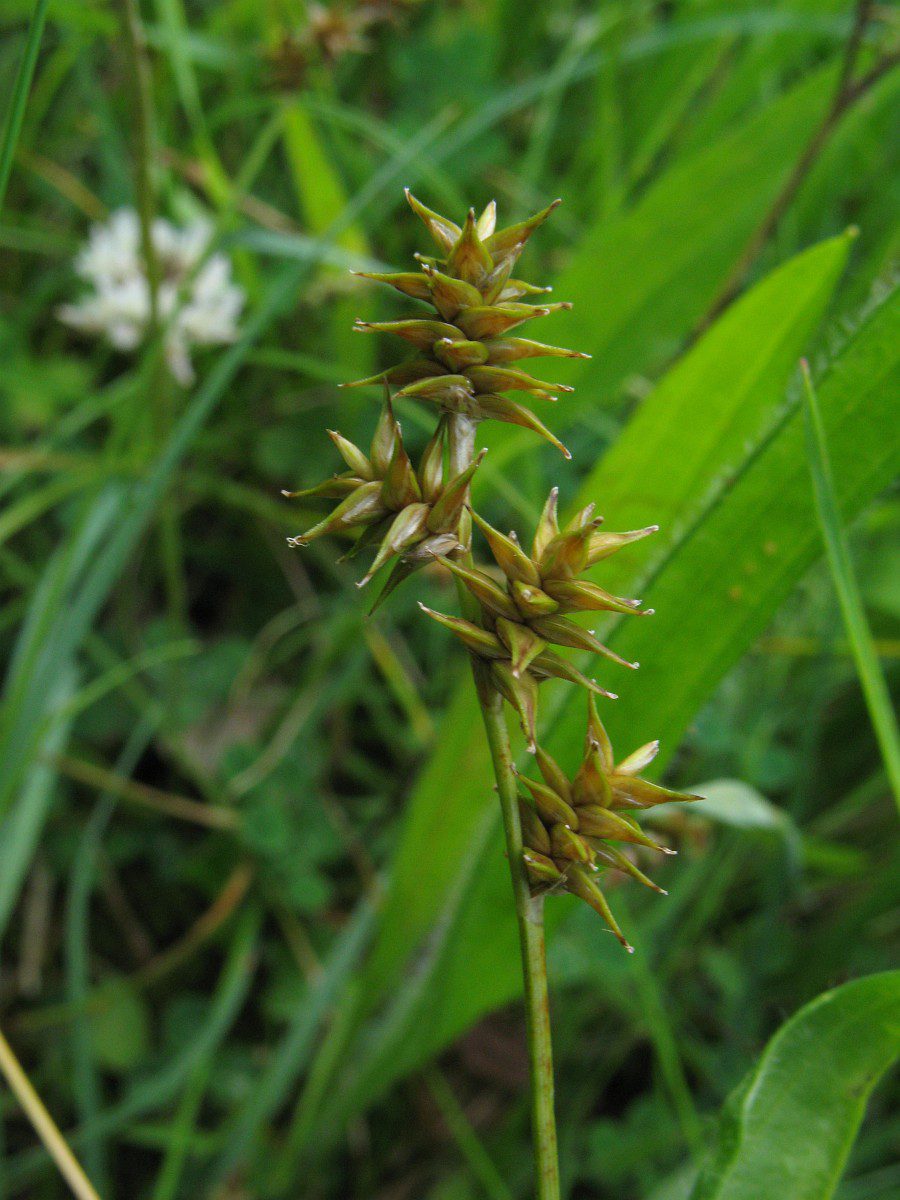 ORNITHOPUS. Linn. N. 0. LEGUMINOS PERPusiLLUs. L. Common Bird’s-foot. June-July.
ORNITHOPUS. Linn. N. 0. LEGUMINOS PERPusiLLUs. L. Common Bird’s-foot. June-July.
Sandy and gravelly places. Not infrequent. Near Dunham. Baguley Moor. Kersal Moor, plentiful.
- NANUS. FoRST. U. EUROPJSUS, var. j3. L. Dwarf Furze.
Autunmal Furze. E. B. 743. August – November.
Dry heaths and moors, and rough, hilly pastures. Kersal Moor
and Lindow Common, abundant.
- MOSCHATA. L. Musk Mallow.
July -August.
Meadows and hedge banks near Agecroft. Hedge banks near Barlow Hall. Railway banks between Cheadle and Wilmslow. Near the river at Irlam. Banks of a brook near the Old Hall, Withington. Field near the Black Clough, Kersal Moor.
- AMARA. L. Bitter Ladies’ smock.
May-June.
Marshy woods and thickets. Common. Cotterill Wood, plentiful. Reddish Wood. Red-brow Wood, Bent-bog, near Kersal Moor. Sheep eat it ; cows are not fond of it. The young leaves are acrid and bitter but do not taste amiss in salads.
- ARVENSis. L. Com Spturey.
June -August.
Cultivated fields and waste places, especially on a sandy soil. Lower Broughton and Kersal Moor, plentiful. S. arvensis is a common weed, in sandy soils, in Scotland called yarr, and in Norfolk, pickpurse. It is said to enrich the milk of cows, so as to make it afford excellent butter; and the mutton fed on it is preferable to that fed on turnips
- SBMTDBCANDBUM. L. Little Mouie-CBr Cluckweed.
April-May.
Behind the grand stand, Kersal Moor, in tolerable plenty.
Wahl. Arenaria rubra. L. Sm. Hook. Purple Sand-wort. E. B. 852. J
June -July.
Kersal Moor, plentifiil. Baguley Moor… ‘Among tiie loose and arid sands, The humble Arenaria creeps; Slowly the purple star expands, But soon within its calyx sleeps.’
- ANNUUS. L. Annual Knawel. German Knot-grass.
July.
Cultivated fields, especially in sandy situations. Kersal Moor.
annuus is common throughout Europe on a sandy soil. It flowers about the middle
of summer, and sows its seeds very abundantly in the autumn, which produce a crop of young plants that generally survive the winter, or if destroyed, are replaced by another crop, arising from those seeds that happen not to vegetate till spring. —The
Swedes and Germans receive the vapour from a decoction of it into their mouths, to cure the tooth-ache.
- PARViPLORUM. ScHRiB. E. HiRSUTUM, var. /3. L. Small-flowered Hoary Willow-herb.
July.
Boggy situations. Hale Moss, plentifiil. Rosthem Mere. Also near Clewarth Hall, Tyldesley, Shackerley, and Westhoughton. Kersal Moor. Ditches and boggy places in Reddish Vale ; and many other places.
- SUPINUS. MCENCH. J. ULIIN0SUS. Bosus. L. Little Bulbous Rush.
August.
Boggy and swampy places. Kersal Moor and Hale Moss, plentiful.
- VULGARIS. L. Common White-rot. Marsh Penny-wort.
Ma-June.
Wet, marshy places, and moors. Hale Moss. Kersal Moor Baguley Moor. Chat Moss. Other similar localities.
- coRONOPUS. L. Buck’s-horn Plantain.
June -July.
It formerly grew plentifully in two or three places on Kersal Moor, but was destroyed there in consequence of the alterations being made on the race-course.
- DECUMBENS. Beauv. festuca decumbens. L. Decumbent Heath-grass.
July.
Woods, moors, heaths, and pastures. Plentifiil. Kersal Moor. Hale Moss. Boggart-hole Clough. Hough pastures in the hilly districts, plentiful. Frequent about Leigh.
BMEDIA. L. Common Quaking-grass.
July. .
Meadows and pastures. Not unfrequent. Marple Yale, plentiful. Reddish Vale. About Ringway, near Eccles. Kersal Moor. Shakerley, near Leigh.
Cows, sheep, and goats eat it. If a seed be carefully dissected in a microscope, with
a fine lancet, the young plant will be found with its roots and leaves pretty perfectly
formed. A grass of no value as a pasture grass, but only as it grows on such, wet parts as better grasses would not grow on.
- OFFICINALIS. L. Common Speedwell.
June-July.
Very common in dry heathy situations. Reddish Vale. Marple Vale. Near Hough End. Kersal Moor. About Bowdon and Dunham.
The leaves have a slight degree of astringency and bitterness to the taste. An infusion of them is recommended by Hoffman, as a substitute for tea; but it is more astringent and less grateful. It is eaten by cows, sheep, goats, and horses ; swine refuse it.
To read the whole original book which has been digitalised by the Internet Archive – click here
See also:
